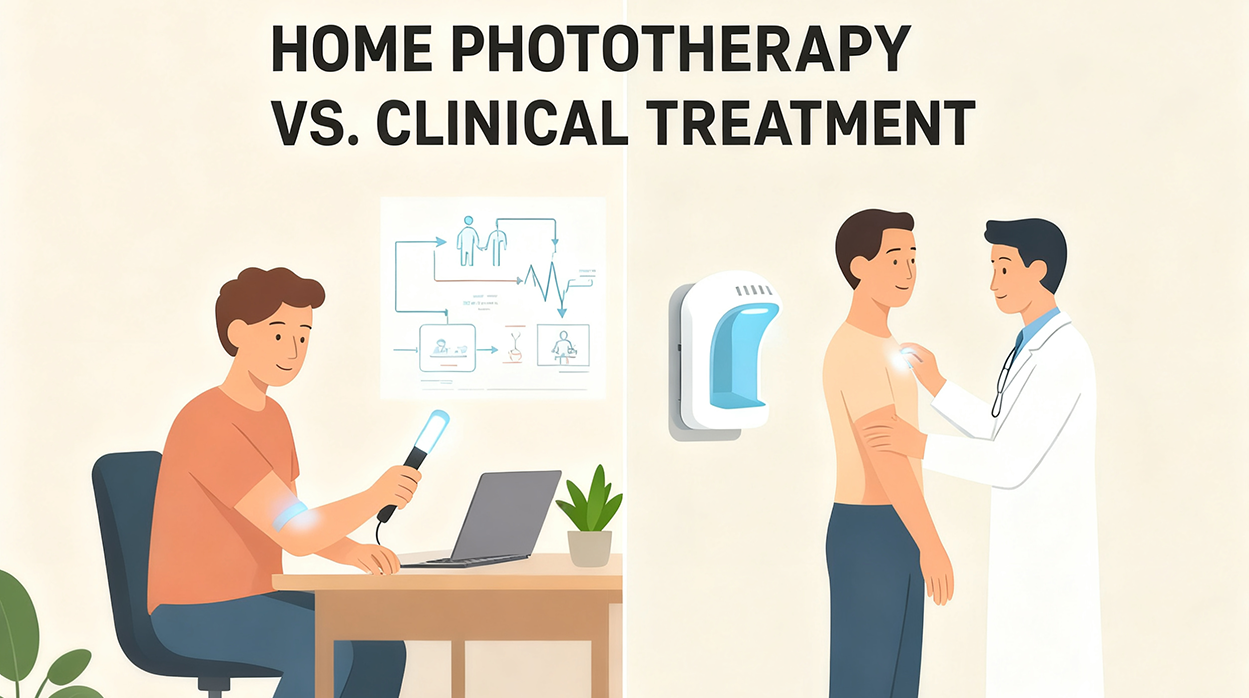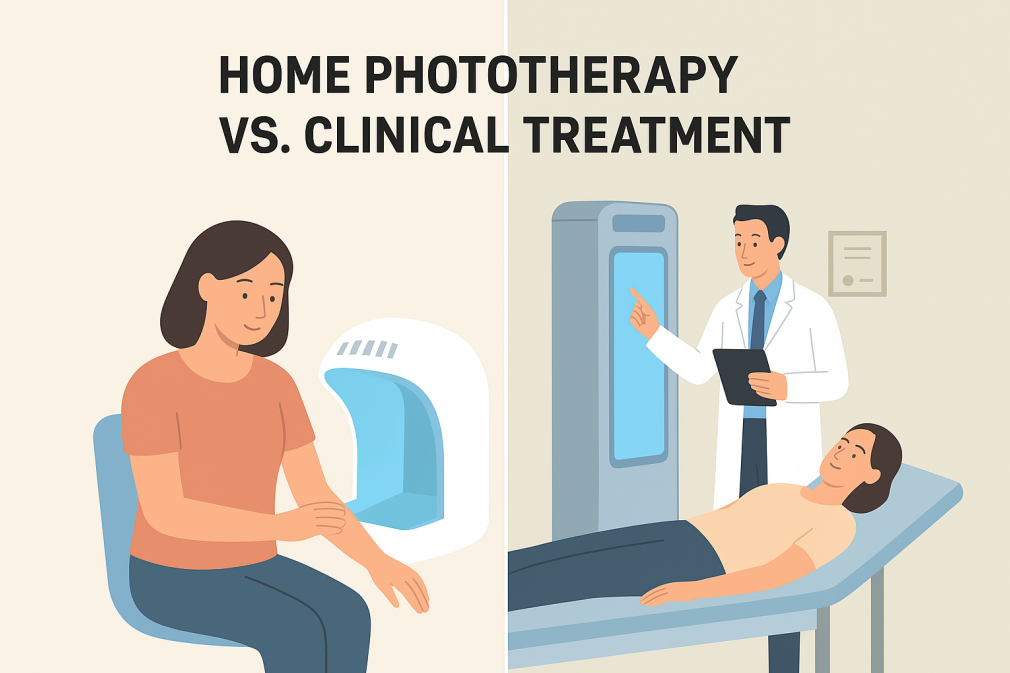
Phototherapy is a well-established treatment for skin conditions such as psoriasis, vitiligo, and eczema. With the rise of compact home devices, patients now face an important question: should they choose home phototherapy or continue treatment in a hospital or clinic? While both use the same narrowband UVB technology, the way they are delivered can lead to very different experiences.
In hospitals or dermatology centers, phototherapy is performed using large medical units under professional supervision. Each session is adjusted according to skin type and disease severity.
Advantages:
Professional monitoring reduces risks of burns or misuse.
Accurate dosage settings ensure consistent results.
Emergency support is available in case of side effects.
Drawbacks:
Patients often need two to three visits per week, which can be costly and time-consuming. For those living far from treatment centers, access may be difficult.
Modern home phototherapy units use the same NB-UVB lamps found in clinics but in smaller, patient-friendly devices. These are usually prescribed for long-term use.
Advantages:
Convenient daily or weekly sessions without travel.
Cost-effective over time, especially for chronic conditions.
Flexible scheduling improves treatment adherence.
Drawbacks:
Without medical staff present, patients must strictly follow guidelines. Incorrect use can cause overexposure, skin irritation, or reduce treatment effectiveness. Smaller devices may also take longer to cover large areas of skin.

Studies show that, with proper guidance, home phototherapy can be as effective as clinical treatment for many conditions. However, clinical settings provide closer monitoring, making them ideal for patients with unstable or severe disease. A balanced approach is often recommended: begin treatment in a clinic, then continue maintenance at home under dermatologist supervision.
Clinical therapy: Involves ongoing fees for each session, plus travel and time costs.
Home therapy: Requires higher initial investment, but long-term expenses are lower for patients needing continuous treatment.
Better suited for clinics: Severe conditions, children, or patients who previously experienced side effects.
Better suited for home use: Stable chronic cases, patients far from hospitals, or those seeking cost savings.
Both clinical and home phototherapy are proven, safe, and effective when used correctly. Clinical treatment offers professional supervision and accuracy, while home therapy provides flexibility and affordability. The key difference lies in patient lifestyle and treatment needs. For best results, patients should always consult a dermatologist before deciding on the most suitable option.